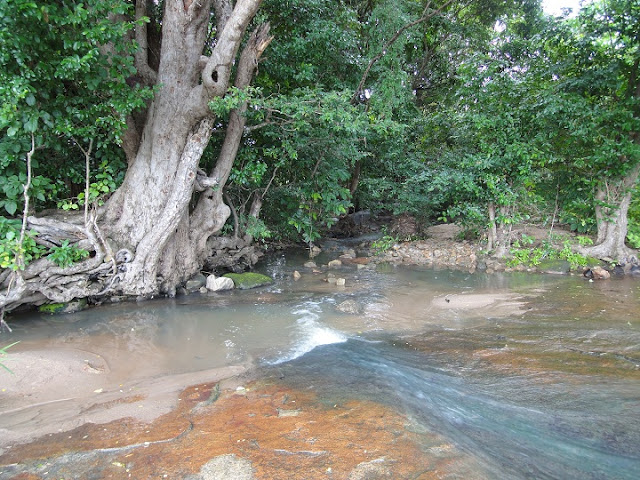So, Mariri is Matu.
It’s just about right smack in the middle between Pemba and Montepuez,
and seventeen kilometers off the main road between those two cities. Oddly enough, there’s a paved road that veers
off the main road in a perpendicular direction and then goes all the way there
even though cars rarely use it. For the
most part, motorbikes are the main means of transportation to town (if you can
even call it that) to and from the main road.
At the main road, you find the town of Nanjua which is essentially just
collection of homes set up around a market that’s as barren as the dirt roads
running though this rustic crossroads.
Turn down the paved road and follow it for 17km through a
few small towns until you finally hit Mariri, a sleepy African Oasis entrenched
behind an enormous rock and at one point in time, home to the most prestigious
secondary school in the entire country. During
the war, if you were a student, this was the place to be. Samora Michel, as well as a laundry list of
other highly influential people all sent their kids there to study.
Unfortunately the story today isn’t as encouraging. Fallen from grace, the school now functions
as a spillover for the surplus student population from the surrounding cities,
towns and villages that were unable to register in time to take classes where
they live. Practically none of the
teachers that work there are native to the area, and therefore they mostly
commute in for the week and leave on the weekends.
Although still gorgeous, the feebly painted concrete complex
has an eerie feel to it. Walking through the quiet community up to the school
along a gravely road lined with humongous, wide-armed mango trees felt like
walking through post-Chernobyl Pripyat.
Everything is still intact and oddly aesthetic, yet it’s completely
deserted. I should probably point out
that we were there on a Saturday, so that probably accounts for the feeling of
complete and utter abandonment.
We explored the desolate school yard, popping in and out of
buildings hidden by tall grass and upturned soil, pretending like we were the
only ones left on earth. One dark room we came across looked as though
the school decided to use it as an above ground, contained trash heap. Loose papers covered the floors a couple of
inches deep. Random broken furniture was
thrown about, entangled in piles of other junk.
And then wouldn’t you know it, but we saw a body; or, what we thought
was a body. Once a relic of the school
past prominence, someone had thrown the top half of a very realistic, yet
plastic cadaver dummy into the pile where it was resting in an upright and
terrifying position. In the low light,
it was hard not to mistake it for the long-lost peace volunteer that was in
Mariri before our friends, but never heard from again.
 |
| Totally a body. |
Behind the school, we followed a path along a lake, and up
into the matu until we eventually penetrated a thick forest. In the middle of the forest, we came across
the remnants of what appeared to be a concrete Portuguese tee-pee.
So naturally, we took a picture in front of it.
We made it back to our friends home just in time to meet Chad for our Ride home. But the adventure doesn’t end there. Driving though the matu on the way home we ended up getting stuck in the middle of a bush-town and had to recruit the majority of the populates to help get us out. Here are some pictures.
 |
| Who wears a Pink Parka to a pull-out? |














No comments:
Post a Comment